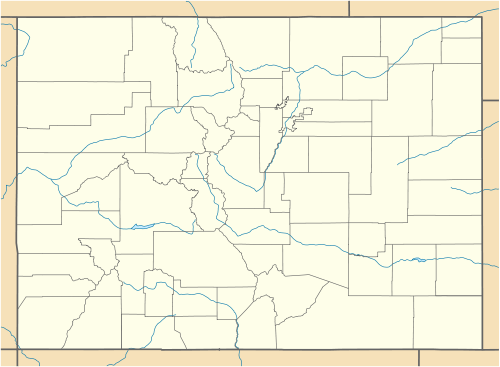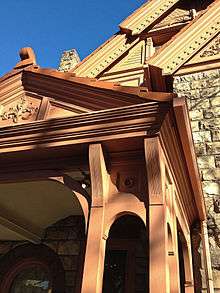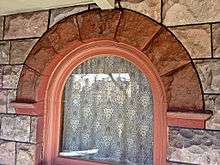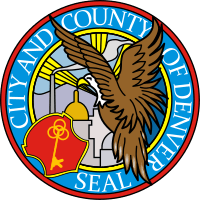Molly Brown House
|
Molly Brown House | |
|
Front of the house | |
  | |
| Location | 1340 Pennsylvania St., Denver, Colorado |
|---|---|
| Coordinates | 39°44′14″N 104°58′49″W / 39.73722°N 104.98028°WCoordinates: 39°44′14″N 104°58′49″W / 39.73722°N 104.98028°W |
| Area | less than one acre |
| Built | 1887 |
| Architect | George W. Clayton; William A. Lang |
| NRHP Reference # | 72000269[1] |
| CSRHP # | 5DV.178 |
| Added to NRHP | February 1, 1972 |
The Molly Brown House Museum (also known as House of Lions) is a house located at 1340 Pennsylvania Street in Denver, Colorado, United States that was the home of American philanthropist, socialite, and activist Margaret Brown. Brown was known as "The Unsinkable Molly Brown" because she survived the sinking of the RMS Titanic. The museum now located in her former home presents exhibits interpreting her life and that of Victorian Denver as well as architectural preservation. The house was listed on the National Register of Historic Places in 1972.
History

The house was built in the 1880s by architect William A. Lang, incorporating several popular styles of the period, including Queen Anne Style architecture, for the original owners Isaac and Mary Large. They suffered financially from the crash resulting from the repeal of the Sherman Silver Purchase Act in 1893 and were forced to sell the house. It was purchased by James Joseph Brown (J.J.), Margaret's husband, in 1894 for US$30,000 and the title was transferred to Margaret in 1898, possibly due to J.J.'s deteriorating health.
Margaret and the family traveled a lot of the time, and so the house was rented out. In 1902, it was the governor's mansion for the Governor of Colorado and his family (Maggie invited the governor and his family to use her home while the governor's mansion was undergoing remodeling). During the Great Depression, Margaret was forced to turn it into a boarding house under the supervision of her housekeeper. It was also during the Depression that the house was sold after Margaret's death in 1932, for $6,000. It was in disrepair, and the new owners drastically remodeled it to house 12 roomers.
Restoration

The house continued to deteriorate and by 1970 was set for demolition, but a group of concerned citizens formed Historic Denver, Inc., raising the funds for the house to be restored to its former glory. In restoration, the group used architectural research, paintchip analysis, and original photographs taken in 1910 as guides to reconstructing it. Today the home is still owned by Historic Denver, Inc., and public tours are run daily for a fee.[2]
See also
References
- ↑ National Park Service (2009-03-13). "National Register Information System". National Register of Historic Places. National Park Service.
- ↑ HouseFront
External links
- Museum official website
- "Visit the home of Molly Brown, survivor of the Titanic". Denver Post. March 23, 2012.

